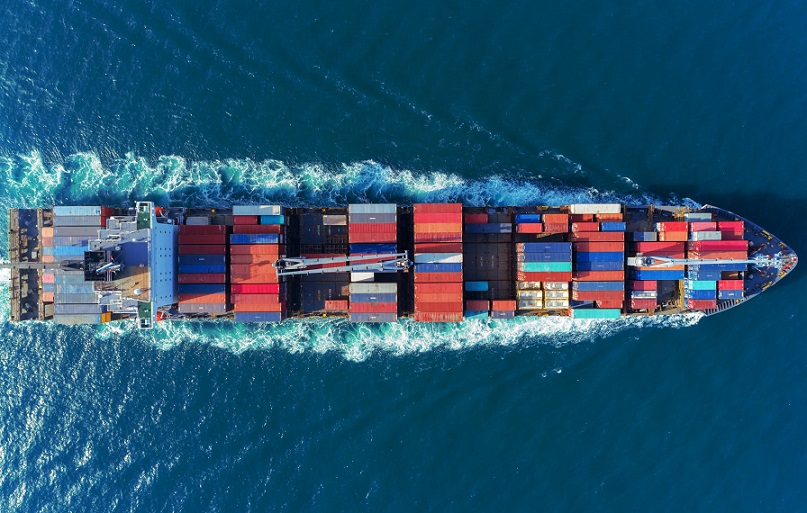The so-called international logistics is to organize the reasonable flow of goods internationally, that is, the logistics that occurs between different countries. Its general goal is: to serve international trade and transnational operations, that is, to choose the best way and route, with the lowest cost and the least risk, to transport the goods from the supplier of one country to another country in a timely manner with quality and quantity. The demand side.
The Characteristics Of International Logistics
1. Long logistics channels and much ease of logistics
2. The complexity of the logistics environment
3. High standardization requirements in international logistics
4. Risks in international logistics
5. Multiple modes of transportation in international logistics
Types Of International Logistics
1. According to the classification of the flow of goods between countries, it can be divided into import logistics and export logistics.
2. According to the tariff area classification of commodity flow, it can be divided into logistics between different countries and logistics between different economic regions.
3. According to the classification of goods transported across countries, it can be divided into international arms logistics, international merchandise logistics, international philatelic logistics, international donation logistics, etc.
The Relationship Between International Logistics And International Trade
1. International trade is the basis and conditions for the production and development of international logistics
2. The efficient operation of international logistics is a necessary condition for the development of international trade.
International Trade Puts Forward New Requirements On International Logistics:
1. Quality requirements
2. Efficiency requirements
3. Safety requirements
4. Economic requirements
International Logistics System
International logistics mainly includes delivery, domestic transportation, customs declaration in exporting countries, international transportation, customs declaration in importing countries, and delivery
Product Inspection
Commodity inspection is to appraise the quality and quantity of the goods delivered by the seller to determine whether the quality, quantity and packaging of the delivery are consistent with the contract.
Time And Place Of Commodity Inspection
1. Inspection in the exporting country
2. Inspection in the importing country
3. Inspection in the exporting country and re-inspection in the importing country
Verification Agency
1. Official institutions
2. Non-official institutions
3. Laboratories and inspection rooms established by factories, enterprises and users
Inspection Certificate
Commodity inspection certificate refers to the legally effective certification document issued by the inspection agency after the import and export commodities have been inspected and appraised.
Customs Declaration Business
The so-called customs declaration refers to the import and export commodity receiving and consignor or their agent fill in the “Import and Export Commodity Declaration Form” in accordance with the format prescribed by the customs, and attach the documents required by the customs for inspection. Request the customs to go through the procedures for import and export of goods.
Responsibilities Of The Customs
Customs is the state’s supervisory authority at import and export ports. In the state’s foreign economic and trade activities and international exchanges, the customs exercises the right to supervise and manage on behalf of the state.
1. The actual supervision of import and export means of transport, commodities, luggage items, postal items and other items.
2. Collect duties and other taxes and fees 3. Investigate smuggling 4. Compile customs statistics and handle other customs operations
Customs Declaration Documents And Deadlines
Units that have been approved by the customs to register and can directly or accept entrustment to handle the entry and exit procedures of means of transport, commodities, and articles with the customs are called “customs declaration units.”
For general export commodities, the customs declaration documents that need to be submitted for inspection include:
1. Import and export commodity declaration form
2. Import and export commodity license and other approval documents stipulated by the country
3. Bill of lading, loading order or waybill.
4. Invoice
5. Packing list
6. Tax reduction or exemption certificate
7. Commodity inspection certificate
8. Trade contracts and other relevant documents deemed necessary by the customs to be submitted for inspection.
Customs Declaration Procedures For Import And Export Commodities
Customs Supervision Procedures
1. Accept the declaration
2. Inspect the goods
3. Collect taxes and fees
4. Customs clearance
Consignee, Consignor, Etc. Submission Procedures
1. Apply for submission
2. Verify the goods
3. Pay taxes and fees
4. Pick up the goods by voucher
Calculation And Collection Of Duties And Other Taxes
Tariff amount = Duty-paid price * Tariff rate
Commodity Storage
Commodity storage is to make the commodity in a relatively long or short state of stagnation in the circulation process.
Bonded system: It is a tariff system adopted by governments of various countries to promote foreign processing trade and re-export trade. It is for certain imported goods, after entering the country, the final destination of domestic sales or return has not been determined, and the payment of import taxes has been suspended. A system supervised by the customs.
Bonded area: a specific area and warehouse set up by the customs or approved and registered by the customs and subject to customs supervision. Foreign goods entering the bonded zone can be temporarily exempted from paying import tax. If they are re-exported, export tax will not be paid. If they enter the country’s market, they must go through relevant customs declaration procedures and pay import tax. Can be divided into 1. Designated bonded area 2. Bonded warehouse 3. Bonded warehouse 4. Bonded factory 5. Bonded exhibition hall
Free Trade Port Or Free Trade Zone
It means that all or most of the import and export commodities are exempted from customs duties outside the customs territory, and the free storage, exhibition, dismantling, modification, processing and manufacturing of commodities are allowed to be carried out in the port or in the region, so as to promote the economy and foreign trade of the region Development, price increases, fiscal revenue and foreign exchange revenue.
Regulations Related To Taxes And Business Activities
Export Processing Zone
A country or region, near its port or airport, delimits a certain area, builds docks, roads, stations and other infrastructure, and provides a series of preferential policies such as tax exemption, and encourages foreign companies to invest in the region to produce export-oriented products. Processing area of industrial products.
International Freight Forwarder
An international freight forwarder is a person who is entrusted by the cargo owner to handle customs declaration, handover, warehousing, allocation, inspection, packaging, transshipment, chartering and warehousing. The main businesses are:
1. Ship chartering and warehousing agent
2. Cargo customs declaration agent
3. Transshipment and tally agent
4. Storage agent
5. Container agent
6. Multimodal Transport Agency
International Transport
International transportation is the core of the international logistics system. The goods are transferred from the seller to the buyer through the international transportation operation, which overcomes the spatial distance between the place of production of the goods and the place where they are needed, and creates the space benefits of the goods.
Main Intermodal Transportation Modes
1. Sea/land-air
2. Aviation/road
3. Railway/road/inland river or sea/rail/inland river
4. Miniature land bridge
5. Land bridge
Problems In China’s International Transportation
1. Insufficient shipping power, uneven freight forwarding routes, and fewer ports.
2. Railway transportation is in a general emergency, and inland exports are more difficult.
3. Air transportation is insufficient and the freight is expensive, which is difficult to meet the needs.
The Concept Of Tally
Management or mainly refers to when the ship or cargo owner receives and delivers goods at the port of shipment and the port of unloading according to the contract of carriage, entrusting the tally agency of the port to complete the counting of the goods at the port, inspecting the damage of the goods, guiding the loading and stowage, Develop relevant documents and other work.
Tally work
Tally Documents
A tally document is a document used and issued by a tally agency in the tally business. It reflects the original record of the actual situation of the quantity and status of the ship’s cargo at the port when it is handed over. It has the function of voucher and evidence.
Mainly include:
1. Tally Power of Attorney
2. Counting list
3. On-site record
4. Daily report
5. Waiting time record
6. Commodity overfill and short order
7. Commodity damage order
8. Commodity stowage chart
Invoicing: According to the export packing list or import manifest, the identification or ownership of the goods can be distinguished, and the ownership of mixed invoices and unclear goods can be distinguished.
Physics: In the process of loading and unloading goods on ships, record the number of hooks of the hoisted goods, count the details of the goods in the hooks, and calculate the number of goods loaded and unloaded.
Disability Anything that is damaged, defaced, wet, or abnormal changes in the packaging or appearance of a commodity may endanger the quality or quantity of the commodity and become damaged.
Draw The Actual Product Stowage Map
Before loading, the tally agency obtains a stowage plan from the ship or its agent, and the tally personnel guide and supervise the workers on loading and stowage based on the stowage plan. After the completion of the shipment, the tally leader also draws the actual product stowage diagram.
Visa And Endorsement
In order to handle the formalities for the delivery and acceptance of the goods, the ship model signs on the documents such as the merchandise over-and-short order form, the merchandise damage form, the chief mate receipt and the tally certificate, which are called visas. Write comments on the number or status of the product on the tally or shipping document, which is called an endorsement



